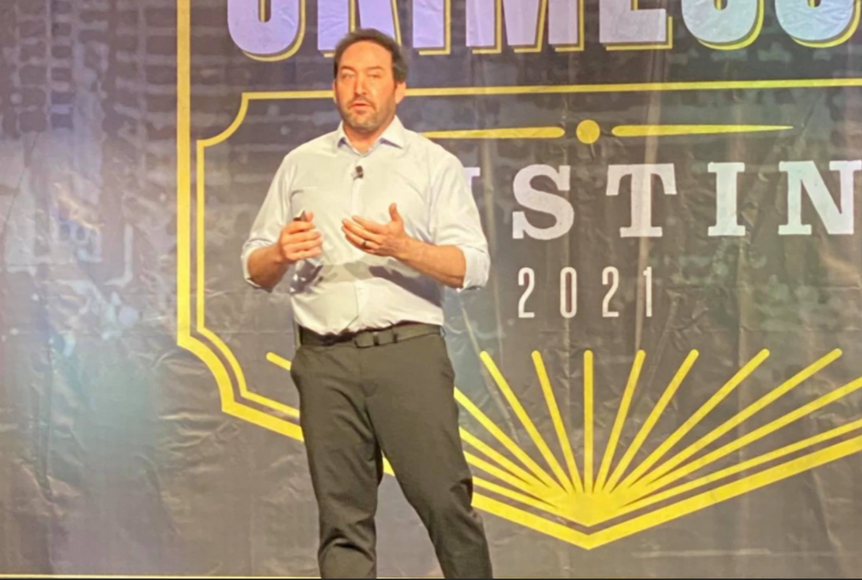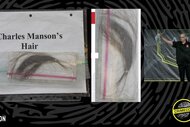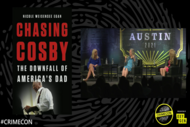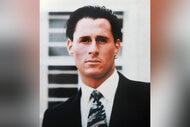Create a free profile to get unlimited access to exclusive videos, breaking news, sweepstakes, and more!
'Tip Of The Iceberg': The Aspect of DNA Analysis That Isn’t Often Talked About
Despite the advances in DNA analysis, some hurdles remain, like a preponderance of low-quality samples. David Mittelman, CEO of DNA lab Othram, says he's up for the challenge, though.
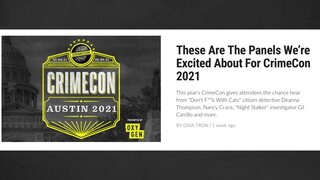
The advances of DNA analysis in criminal investigations have been well documented, but there are still numerous difficulties facing the burgeoning field, including a host of cases that are still "underwater," according to the CEO of a private DNA lab that has helped solve numerous cold cases in recent years.
David Mittelman, CEO of Othram Inc, spoke on Friday to a crowd at the CrimeCon 21 in Austin about some of the challenges of DNA evidence.
“I think it’s helpful to think of forensic casework as an iceberg,” he explained, classifying the "tip of the iceberg" as the crimes where there are plenty of available DNA and evidence. He pointed to cases like the Golden State Killer, in which DNA and genetics led to the serial killer’s capture decades later.
Mittelman said that cases like that, where there were dozens of crime scenes and chances to collect evidence, are rare.
“The unfortunate reality if you talk to forensic professionals or crime scene investigators is that the bulk of casework is actually underwater,” he told CrimeCon, which is presented by Oxygen. “It’s the part that the media doesn't talk about. The DNA that isn’t good enough, the really bad DNA that for one reason or another isn’t suitable.”
Mittelman said that in many cases, DNA is considered "degraded," “not good enough,” or simply “bad.”
“Those are all code words for ‘I didn’t use the right method to record the DNA,’” he said at the convention.
(Speaking to Oxygen.com by phone after his presentation, Mittelman explained further that sometimes the DNA has become "extra degraded" and perhaps has "bacteria on it.”)
There are other constraints. Even if there's enough DNA to determine a suspect's genetic profile, there may not be a match in a criminal database, like CODIS, the FBI's DNA database. Suspects who have stayed off law enforcement's radar previously would have no DNA profiles to compare fresh samples to.
And there's the matter of case backlog. As Mittelman noted, the vast majority of sexual assault kits that aren't quickly matched with a potential suspect through CODIS fall underwater.
Othram is able to go to the “bigger part of the iceberg” to solve cases that “either nobody else wants or ones that have repeatedly failed," Mittelman said.
"Methods we use are less sensitive to degradation," he explained. "We can take really degraded DNA, small amounts of it, and still get an accurate profile of all the DNA markers.”
In the wake of recent advancements in DNA technology, genetic genealogy work in private labs has proved critical to the identification of killers who were not included in the CODIS database, like the Golden State Killer.
Recently, Othram's research led to breaks in the cases of murdered cheerleader Carla Walker. In the Walker case, DNA evidence originally produced no results. Mittelman said that previous attempts to use the DNA evidence failed at other labs because the sample was small and degraded. However, DNA found on clothing and a bra worn by the victim during the attack was later sent to Othram, where they were able to create a full DNA profile of a suspect. That in turn led to an arrest.
“That’s why we built the lab,” Mittleman said. “For those cases. [...] We are interested in the ones where there isn't evidence.”
He pointed to the case of a teacher who died in 1881, explaining that DNA helped identify her last year after nearly 140 years.
“If you can work a case that’s 140 years old, you can probably work a case that’s 140 days old, 140 months old, so DNA that’s too old isn’t necessarily a deal-breaker in a case,” Mittelman stated.
Most recently, Othram identified the remains of a woman found in the Montana wilderness in 1985. The identification has led officials to believe that the woman, Janet Lee Lucas, was possibly killed by a serial killer. They received financial assistance from the Montana Department of Justice’s Sexual Assault Kit Initiative program to undertake a forensic genetic genealogy investigation. A collaborative effort by the investigators and lab previously resulted in the identification of Siobhan McGuinness, a 5-year-old girl who was sexually assaulted and murdered in the area in 1974. Mittelman told Oxygen.com via phone that the DNA, in that case, was both low quantity and degraded, but his team was able to work with it regardless.
He said he hopes more "underwater" cases with "challenging" DNA can continue to be solved.
